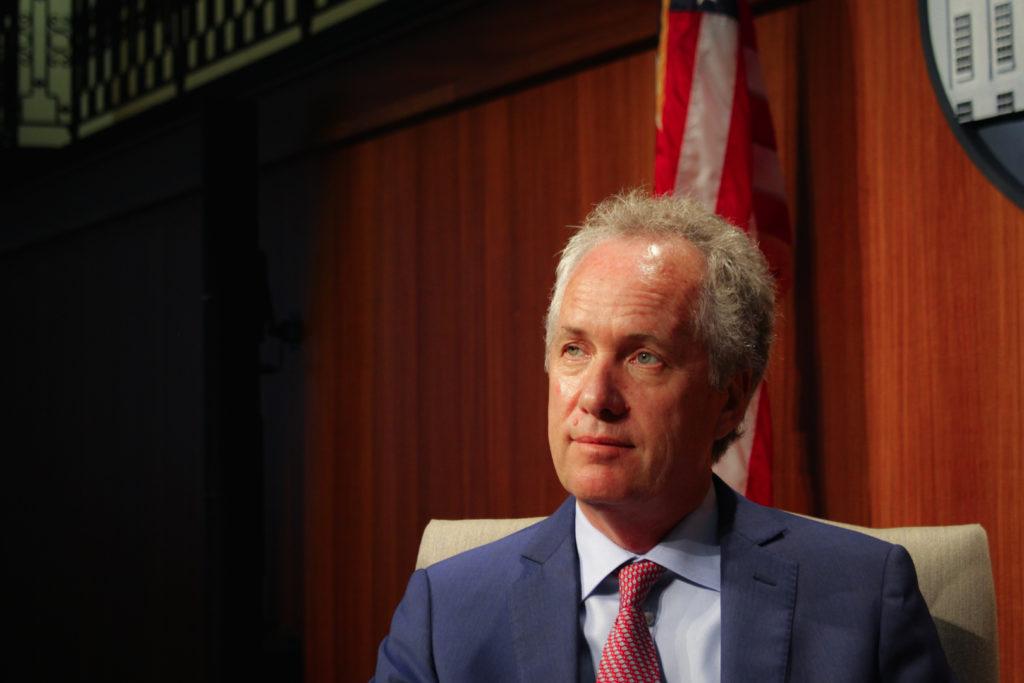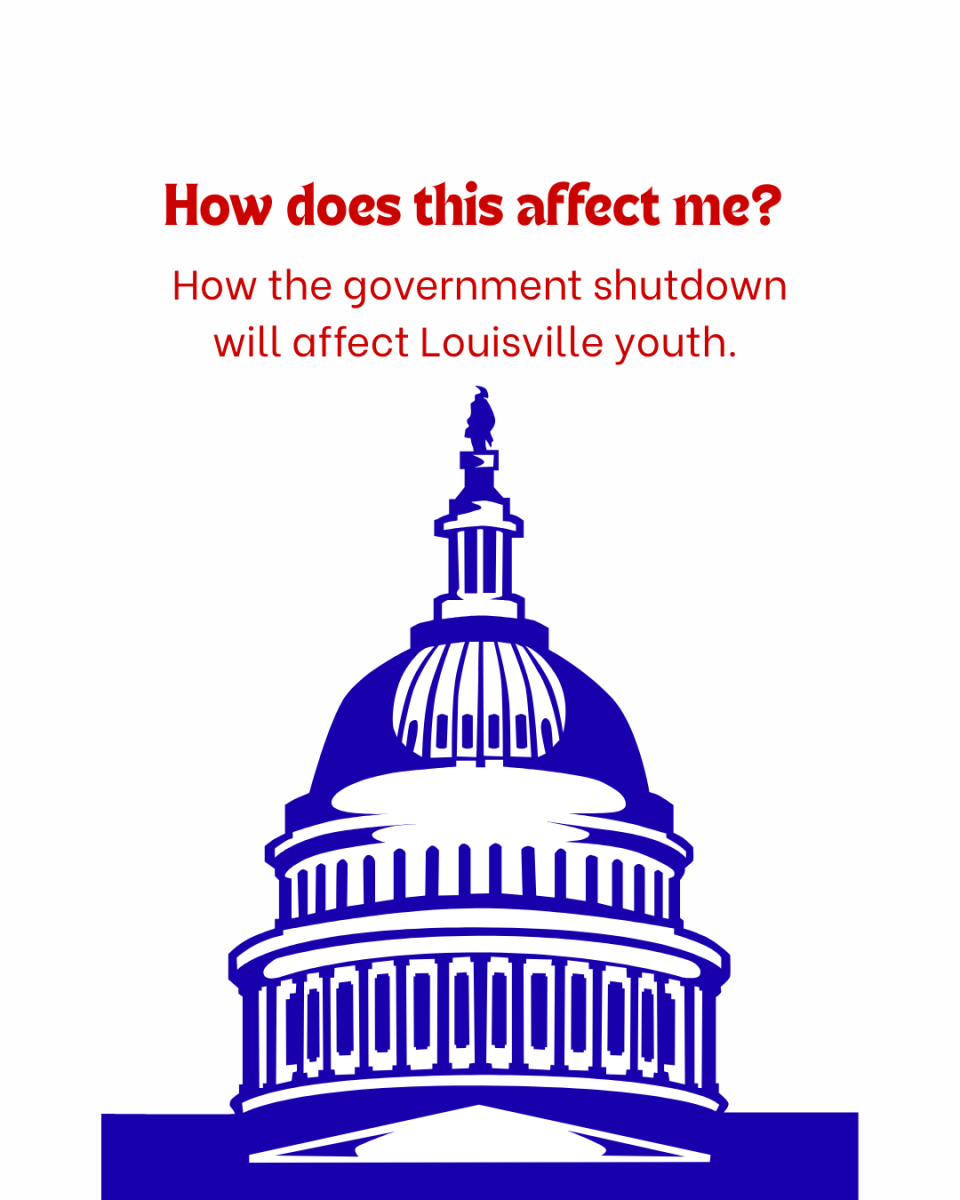We hear television anchors, radio show hosts, and our own parents talking about budgets. Generally, we know that “budget” means a certain amount of money set aside for a specific purpose. Your parents might have a weekly grocery budget, for example. Okay, that’s easy. We’ve got that. But what does it mean for a nation like ours to have a budget? Where does the money come from? Where does it go? The federal budget can get confusing.
The process of federal funding begins with the president submitting a proposal to Congress at the beginning of the year laying out the amount of money the government should spend and where that money should go. At that point, the proposal is simply a request outlining where the president would like for money to go — Congress has to approve the budget to make it official.
So, how does the budget eventually break down? The basic answer is that there are two types of government spending: mandatory and discretionary.
Mandatory spending makes up about two-thirds of the budget and covers all of the government programs that absolutely must be funded each year, like Social Security, Medicare,Medicaid, and food stamp programs. These programs are promised to Americans in legislation, so they have to be funded each year with as much money as they need. Mandatory spending also covers interest on the 20 trillion dollars (yes, you read that correctly, 20 trillion dollars) in loans that the United States has yet to pay back. This interest accounts for about six percent of the U.S. budget and doesn’t help the country in any way other than keeping it from defaulting on its loans, so a good chunk of government revenue goes toward interest rather than beneficial programs every year.
Discretionary spending, on the other hand, is money that Congress has the option to allocate each year to different areas, like transportation, NASA, or defense. These programs cannot spend more than Congress offers them and the amount they get changes annually depending on the current needs and interests of the country, not necessarily the current needs and interests of the program. Regardless of the party in power, most of our discretionary spending goes toward our defense budget, which includes the Department of Defense, Homeland Security, the FBI, and terrorism projects. The amount of defense spending still might fluctuate based on our political relationships or the threat of war for that specific year. The United States’ is currently the highest defense fund in the world. Public education, Homeland Security, and Veteran’s Affairs are also covered by discretionary spending, but they receive significantly less than defense.
2017 Budget Crisis
Okay, great, we’ve got the definition down. But what is going on with the current federal budget? In his 2016 campaign, President Donald Trump touted the idea of funding a wall along the Mexican-U.S. border. In fact, his conservative position on immigration was one of the defining factors of his candidacy. Now — a quarter of the way through Trump’s presidency — when it comes to decisions on the federal budget, the government is at a loss. With a Republican president, House, and Senate, you would expect the government to make decisions without much debate, but under this administration, it’s a different story.
Both major parties are split into multiple factions, which are essentially subgroups representing different levels of liberalism or conservatism. Because of these factions, the Republican party is a politically diverse entity encompassing Tea Party conservatives, libertarians, far-right extremists, as well as center-right stalwarts, making it hard for its members to make decisions easily. The border issue has only added to the growing partisanship, or divisions, within the party. Thus, decisions aren’t as easy to come by as we may think.
Building thousands of miles worth of Mexican-U.S. wall is easier said than done — it would cost money (tens of billions of dollars, actually) that many members of Congress are not willing to spend on border protection. Many strict economic conservatives in Washington are insistent upon a balanced budget, while others prioritize fulfilling their promises to the people of the United States, and of course there are plenty of groups in between. This wide spectrum of ideologies has caused recent hostile disagreements between Republicans, prompting Trump to make a startling claim: if Congress couldn’t agree to make room in the budget for this wall, he would temporarily shut down the federal government. For us that could mean the shutdown of public libraries, parks, and zoos, as well as lowered wages for government employees.
On Aug. 24, however, only two days after making this claim, the White House notified Congress that a government shutdown would not be necessary. The executive officials still made it clear, though, that the wall is one of the president’s top priorities.
This is not the first time that Trump has threatened shutdown and quickly shied away: in May, he made the same statement when Congress did not put away $1.6 billion of the May through September budget for construction of the wall.
Threats of shutdown have left many citizens to consider the federal budget and how it could affect them. What does Trump’s presidency mean for our budget? How will 2018 be different from the past? What does this mean for our families?
Trump’s Budget Plans
The president’s 2018 Budget Proposal Overview states, “The 2018 budget… ensures that the federal government spends precious taxpayer dollars only on worthwhile policies, and in the most efficient, effective manner.” But what exactly are these “worthwhile policies”? Because the Trump administration is interested in breaking from the economic policies of the previous administration (hence “Make America Great Again”), Americans are wondering what changes will be made in 2018 and how these changes will affect their lives.
First and foremost, the president’s 2018 proposal plans for a $3.6 trillion spending reduction by year 2028, cutting money from programs that do not “drive opportunity and faster economic growth,” and raising funds for those that promote American safety and job growth.
The proposed budget would put even more money into national defense, with a $639 billion dollar annual fund. That’s $52 billion dollars more than the 2017 budget proposed by former President Barack Obama. The new budget also greatly adds to border security and immigration enforcement funds, including the $1.6 billion for the southern border wall that was left out of the March budget.
The overall budget cut paired with all of those funds going toward defense means money has to be taken from somewhere, so what programs could lose money this year under Trump’s proposal?
Funding for the Environmental Protection Agency (EPA), the United States’ regulating agency for environmental sustainability and conservation, will be cut by nearly a third if this budget proposal is passed. The proposed EPA budget of $5.655 billion is $2.6 billion less than the 2017 EPA budget. Under this cut, environmental projects would be controlled mainly by individual states rather than the federal government.
EPA efforts aren’t the only ones affected. Trump also proposed to cut the previously 74-billion-dollar education budget by an incredible 13.5 percent (9.2 billion dollars), which will directly impact students like us across the country. Education cuts can mean less electives, bigger class sizes, or inadequate supplies and infrastructure in schools. Because it has previously been difficult for presidents to make deep cuts to education, this proposed cut shows the true priorities of the Trump administration.
While some of the 2018 spending cuts may have negative effects for public programs or American individuals, many believe that cuts are necessary for balancing the United States’ budget. Others argue that funding government programs can benefit the overall economy because successful initiatives gain significant tax revenue. Of these options, Trump’s administration seems to be focused on cutting funds rather than investing, meaning that we could see some changes–even in our own city.
What Does this Mean for Us?
Not everyone is for the new budget. In fact, Louisville’s Democratic mayor, Greg Fischer, is concerned with the proposal.
“This budget has got a lot of issues in it. There’s going to be a lot of negotiations that take place before it’s final,” Fischer said.
So what are these issues? How is Trump’s new budget going to affect us, as the youth of Louisville and Kentucky? The proposed budget cuts actually have a lot to do with Louisville youth, but, unfortunately, it doesn’t look like they’re going to have positive effects. The cuts to Medicaid are one example of a change that could greatly affect youth in Kentucky.
The proposed budget plans to cut $800 billion from Medicaid. Basically, Medicaid is a social health care program for people in the United States who are in need of immediate healthcare, but cannot afford it.
A portion of Medicaid is also used in public schools to provide expensive equipment and classes that are required for special education in grades K-12. Many public schools rely on this Medicaid reimbursement. Trump’s proposed budget will make it harder for schools to apply for reimbursement from Medicaid, forcing schools to either shrink or cut important programs to pay for special education services and classes, which are required by federal law.
The Medicaid cuts have the potential to also affect a large portion of Kentucky’s non-student population. As Kentucky is the home to some of the poorest counties in the country, Medicaid is widely used in our state. In fact, 1.4 million Kentuckians are recipients of Medicaid.
Let’s look at the effects on a more local level. Without health care aid, a large portion of Louisville’s population could be completely uninsured. To better understand the effects Medicaid cuts could have on Louisvillians, we can look the the Affordable Care Act (also known as Obamacare), a federal statute that increases Medicaid accessibility. The Affordable Care Act has recently been a topic of discussion in government, and its fate could affect millions of Americans, including those in our own city.
“There’s continued efforts to try to repeal the Affordable Care Act as well, which is really important to our city,” Fischer said. “Our uninsured went from about 18 percent to six percent here in Louisville [when the Affordable Care Act was passed], so more and more people have access to healthcare which keeps them healthier, obviously, and out of the emergency room, so that helps our city.”
The changes to health care law are concerning for low-income Louisvillians and Americans of all ages, but the budget could hit college students especially hard. Trump wants to stop subsidizing the interest on many student loans, which means college students will be responsible for any interest that accumulates on their loans. Many students across the country depend on subsidized loans considering the high prices of tuition and the typically high interest rates on loans. Trump’s new budget also plans to cut the Public Service Loan Forgiveness program, which is used to “forgive” students who borrow loans if they serve for a decade in government or for a nonprofit. Without loan assistance, many students will come out of college at a severe disadvantage due to their accumulated student debt.
Americans currently owe over 1.45 trillion dollars in student loan debt and the average amount of debt per student is 37,172 dollars, just under a year’s salary for the average American worker. The new budget, while it may make some necessary cuts, could unfortunately make it more difficult for students to pursue higher education.
Many students may not realize how a huge national issue like the federal budget might affect their families, their schools, and themselves. Something needs to change in order to balance our budget, but those changes could have serious effects on people throughout the country. If this budget passes — and if you’re paying attention — you will definitely see those changes in your community, maybe even in your own home.
Picture this-

You are going to the movies with your friend. While in line to buy tickets, you realize you left your wallet at home! The movie will be starting shortly, leaving you no time to grab your wallet. Your friend, being the amazing friend he/she is, buys your ticket for you and tells you to pay him/her back. Phew. You can see the movie.
Your adult movie ticket costs $10, so you just need to remember to bring your friend the money when you see him/her next. That’s no big deal, because you have the money. What happened between you and your friend was a simple loan.
Well, when it comes to the federal budget, life isn’t as simple as a trip to the movies with a friend. The United States currently has various loans with various countries, resulting in a debt of over 20 trillion dollars.
The number one trillion is a one followed by 12 zeros. TWELVE:1,000,000,000,000! Now picture one trillion 20 times, and that’s our national debt.
The movie example is simple and easy to grasp, but it’s unrealistic when it comes to comparing it to the federal budget. We know you would not go to the movies enough to the point that you owed a friend 20 trillion dollars (at least we hope not). The monstrous United States debt has accumulated over many years, and now it has gotten to the point where the word “extreme” is an understatement.
When it comes to balancing the U.S. budget, how would you choose which debt to pay off, which programs to cut, and which departments to fund?
















